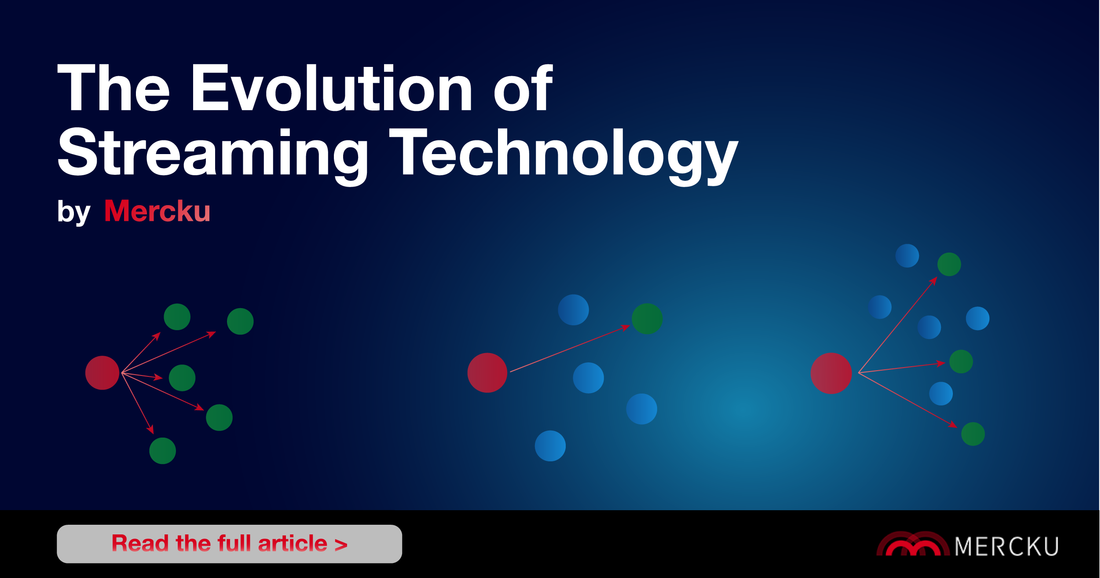Introduction to broadcast, unicast and multicast

In the last decade, video streaming has become essential to how we consume entertainment, how students learn, and how businesses cooperate. The evolution of streaming habits and technology has changed significantly along the way. This blog will shed light on the technology behind online videos, including multicast, unicast, and broadcast, and introduces which technology is the best for your streaming habits.
What is broadcast, and how is it utilized?

When we think of broadcasting, we often think first of television and radio. However, the capacity of broadcasting technology is underestimated in two crucial ways. To start, let's take a look at the definition of broadcasting.
Broadcast transmission is a "one-to-all" technique that ensures all nodes on a network receive the signal or message.
Given its power and convenience of mass distribution, the broadcasting industry has a role in all three venues of the convergence marketplace - content, distribution, and processing. In terms of content, broadcasting is already the dominant producer of digital content to the public.
Here are some examples of successful use cases of broadcasting in different media:
- Television (digital and analog);
- Radio;
- Internet media like websites, blogs, andpodcasts;
- Online streaming.
Source: https://www.haivision.com/blog/broadcast-video/difference-between-unicast-vs-multicast/
Why have other technologies like unicast or multicast flourished if broadcasting can do it all?
Apart from broadcast, there are two other technologies, called unicast and multicast, both of which serve very distinct purposes. Here are the requirements that you'll need to understand each of them better.

Unicast Explained
Let's take a look at Netflix - one of the pioneers of how unicast helps in the modern online streaming world.
In a nutshell, unicast is a "one-to-one" streaming. Typically, it is used in Over-the-Top (OTT) streaming applications (OTT is a term used to describe streaming over the internet), such as Netflix, Amazon Prime, and other streaming providers of this type.
More specifically, the advantage of unicast streaming is the ability for the endpoints to receive video based on the device being served and the available bandwidth. For example, getting a 4K/8K feed for the smart TV, a full-HD feed on the smartphone, or a low-res feed for an older device - or anyone with lower bandwidth.
In a word, the internet is unpredictable, and without the right tools (in this case, using unicast technology) to mitigate potential bandwidth fluctuations and limitations, the end-user experience can end up being less than optimal.
Source: https://www.panopto.com/blog/the-way-video-works-online-has-changed/

Multicast Explained:
Opposite to unicast, multicast is one-to-many streaming. You send information from one point to many endpoints simultaneously, and the most common example of a multicast application is Internet Protocol Television (IPTV). There is one centralized server, and that server sends a single, continuous stream to many endpoints.
Here are some other examples of multicast applications:
- Voice over IP (VOIP)
- Video on demand (VOD)
- Video conferencing
The IP network offers far more flexibility within the network, enabling two-way interactions that traditional, one-way cable or satellite broadcast networks. It allows end-users to have more control and options to interact and personalize their experience.
Multicast routing is a networking method for the efficient distribution of one-to-many traffic. It specifically tackles live audio and video transfers such as live video conferences. Thankfully, routers could have this function built-in for the most optimal internet experience with audio and video transfers.
Source: https://www.uscreen.tv/blog/what-is-iptv/
In conclusion, IP has three fundamental types of addresses: unicast, broadcast, and multicast.
The differences among unicast, broadcast, and multicast can be summarized as follows for you in a key takeaway:
- Broadcast: One-to-all, from one source to all possible destinations, applications such as television, radio, websites, blogs, and podcasts.
- Unicast: One-to-one, from one source to one destination, for applications like Netflix and Amazon Prime.
- Multicast: One-to-many, from one source to multiple destinations expressing an interest in receiving the traffic, applications such as IPTV.
What to learn more about wireless security? Read our WPA3 blog and find more!
For more information about Mercku's Connectivity Suite, our hardware and how you can partner with Mercku, please reach out to the team at connect@mercku.com
Thank you for reading our blog! Mercku Blogs covers the latest in wireless technology - subscribe to our newsletter to make sure you don't miss our newest releases!

